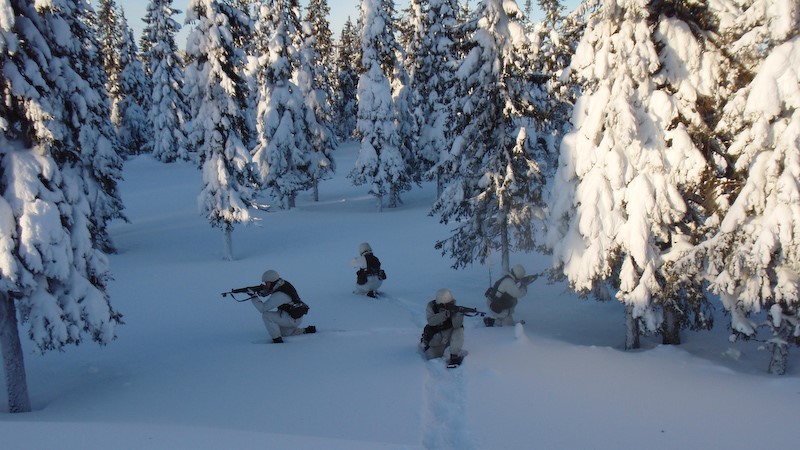In the wake of the Ukraine crisis, Finland and Sweden are facing increasing pressure to join the North Atlantic Treaty Organization as full members. While the NATO debate has been simmering in both countries for some time, especially after Russian bombers practiced attacks against targets in Sweden in an exercise during Easter last year, Stockholm and Helsinki are now being encouraged to seriously consider membership by their Nordic and Baltic neighbors, as well as the United States.
NATO leaders and security experts believe that the Ukraine crisis
has exposed a real vulnerability on NATO’s northern flank, where Sweden and Finland constitute a “gray area” without collective security agreements, in a region close to the Baltic states, currently some of NATO’s weakest and most exposed members. Swedish and Finnish NATO membership would politically solidify NATO’s northern flank, while also opening up a range of new options for NATO, and the U.S., in defending the Baltic states in case of a crisis in the region. To boot, some relish the opportunity to show Moscow that Russia’s aggressive behavior in Ukraine, and in Georgia in 2008, led to “more NATO” near Russia’s borders, not less.
Policy elites in Stockholm and Helsinki are quite prepared to entertain the idea of NATO membership, but public opinion in both countries is a different matter. Being nonallied is practically part of the Swedish identity, while Finland’s historical experience points toward robust self-reliance and cold realism as the best defense against external threats. Both nations have moved forward considerably in their foreign and security policies since the end of the Cold War; both have entered the European Union, for instance, and both have forged close partnerships with NATO, including the deployment of Finnish and Swedish units under NATO command. However, these changes have been quietly driven by the policy elites in each country, and there has been little public explanation of the very real long-term implications of these moves for Swedish and Finnish security. The Ukraine crisis may have brought this quiet arrangement to an end.
NATO membership is ultimately a political question, and Stockholm and Helsinki will not move forward without clear public and parliamentary support for jointing the trans-Atlantic alliance. To complicate matters further, both governments are hesitant to move forward without the other. Sweden began its negotiations for entering the European Union without consulting Finland, to the irritation of Helsinki, but there is now an unspoken agreement between the two nations that neither will move forward on NATO membership without first closely consulting with the other.
While the political situation is complicated, there are possibilities for a way forward. Two years before entering the EU, Swedes were quite skeptical of the concept. However, after a serious public relations campaign to shape opinion, conducted by Sweden’s two largest parties in concert, a slim majority favored EU membership at the time of the national referendum on the issue. NATO’s next secretary-general—former Norwegian Prime Minister Jens Stoltenberg, a social democrat—may also be helpful here. Stoltenberg is quite popular in both Finland and Sweden, and the publics in both countries came away impressed with how calmly and decisively he responded to the terror attack in Oslo in 2011 that killed close to 70 people. Furthermore, Swedish and Finnish social democrats may be more comfortable with the idea of NATO membership with one of their prominent political brothers at the helm.
In security and defense terms, moreover, Sweden and Finland may not have much of a choice over the long run. Sweden has embarked on an ambitious program of defense transformation, which saw the Swedish military transition to an all-volunteer force and lighter units more suited for expeditionary operations in concert with the EU, NATO and the U.N. However, this has also left Sweden less able to defend significant parts of the country for a prolonged period of time. And while the Swedish defense transformation is impressive and ambitious, it is far from perfect. The Swedish military currently faces shortfalls in troop numbers, capabilities such as air defense and artillery, and funding.
Finland, on the other hand, has maintained a strong territorial defense focus, with a conscripted force. Finland’s military is quite capable, with, among other things, F/A-18s equipped with air-to-surface standoff missiles. In addition, Finland recently procured lightly used, but high quality, main battle tanks from the Netherlands and rocket artillery from Denmark at fire-sale prices, as those two countries are managing their own defense spending reductions. However, the Finnish Ministry of Defense is increasingly worried that Finland will not be able to maintain high quality across the spectrum of capabilities due to the ever-spiraling costs of modern military systems and the networks that connect and enable them.
Sweden and Finland are not likely to formally ask for membership in the NATO anytime soon. However, the pressure on Stockholm and Helsinki to seriously consider such a move is likely to grow in the coming months and years. The policy environment is largely primed for Swedish and Finnish membership, through many years of NATO partnerships and close political consultations with Brussels, but public support is another matter entirely. The true indicator for the real possibility of Finnish and Swedish NATO membership is when both capitals start a serious conversation with their voters. After the Ukraine crisis, that conversation may now start much sooner.
Magnus Nordenman is the deputy director of the Brent Scowcroft Center on International Security at the Atlantic Council in Washington, D.C. He writes and speaks on NATO, Nordic defense, maritime security and U.S. military affairs.
Photo: Swedish Arctic Rangers, Lulea, Sweden, Feb. 4, 2008 (Wikimedia photo by Joakim Sandberg licensed under the Creative Commons Attribution-Share Alike 2.0 Generic license).

